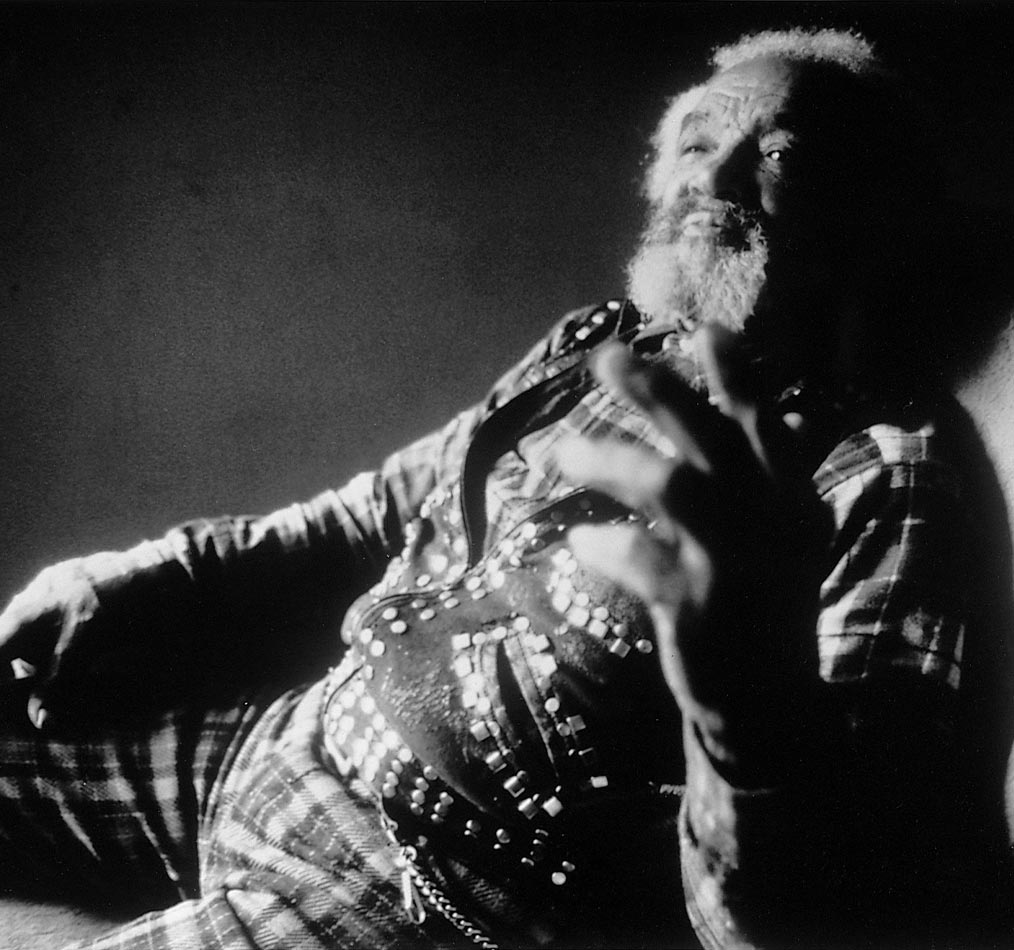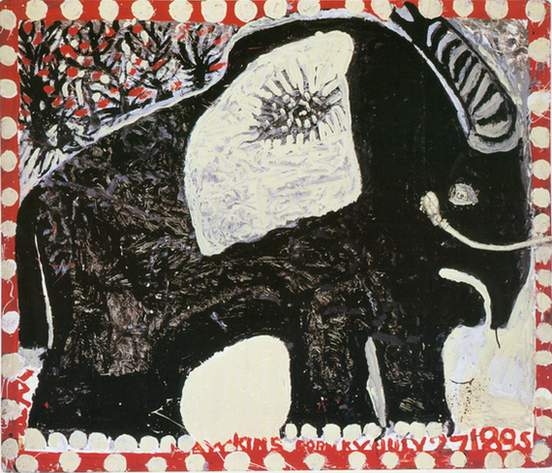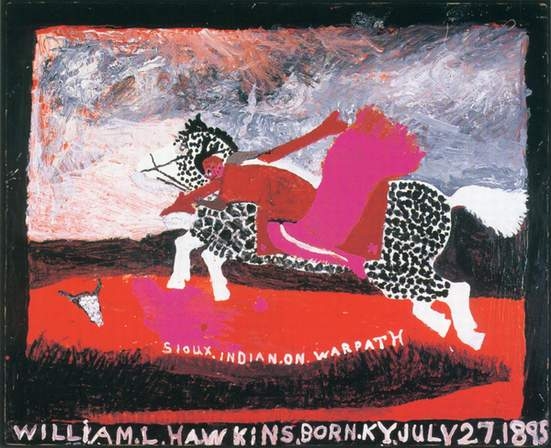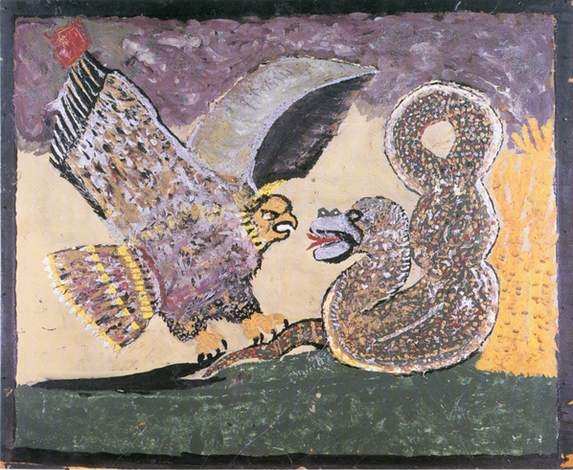William L. Hawkins
1895–1990, American
Tags: Painting

William L. Hawkins was born on July 27, 1895, a fact represented prominently on the distinctive painted frames of his works. Their bright colors and designs reflect his observation of the quilts that his grandmother sewed when he was a child. Hawkins grew up on his grandparents’ farm in eastern Kentucky. He taught himself to draw as a boy by copying horse auction announcements and calendar illustrations. He served briefly in World War I before settling in Columbus, Ohio, in 1916.
Hawkins started painting in the 1930s. He worked variously as a truck driver, trapper, horse breaker, house painter, and metal scrap dealer before retiring in the late 1970s and dedicating his time to art making. He applied house paint with a rough brush on Masonite, wood, metal, cardboard, and found objects. At times he built up his surfaces by mixing sand, fish-tank gravel, or cornmeal into his paint. He collected photographs he took of buildings and animals; images from postcards, calendars, and advertisements; and illustrations from books, especially The Golden Book of America.
Portfolio of Work
Click Arrows to View More Artwork
Magazines, including Life and National Geographic, and local and national newspapers added to his portrayals of far-off locations and current events. He occasionally appropriated famous artworks, rendering them in his own distinctive style. His Last Supper series recasts the racial and gender roles rendered by Leonardo da Vinci. Hawkins associated his talent with his richly diverse racial background—black, white, and Native American—and represented skin tones variously in his paintings, such as the black and green astronauts in Conquest of the Moon #1 and Conquest of the Moon #2.
In 1981 Lee Garrett, an artist living in Columbus, heard about Hawkins and started promoting his work. Hawkins’s paintings are now in the collections of many major museums throughout the United States and in Japan.


